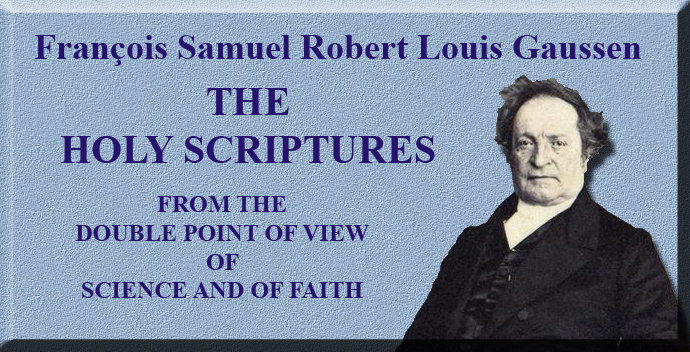
The Holy Scriptures
From the Double Point of View of Science and of Faith
By François Samuel Robert Louis Gaussen
Introductory
|
THE object of this work is to demonstrate, from the Word of God and from history, the exclusive right of the thirty-nine books of the Old Testament, and of the twenty-seven books of the New, to a place in the list of inspired writings. This right is called their canonicity. We shall first establish it from history, as regards the New Testament; and then establish it by doctrinal evidence, as regards the whole Bible. ____________ 1. The Christian Church, as Paul declares, is “built on the foundation of the apostles and prophets,” who preached the gospel to it, — Jesus Christ himself being the chief corner-stone, on which the whole building, fitly framed together, groweth unto a holy temple in the Lord; and on which all true believers also are builded together for an habitation of God through the Spirit. 2. It is, therefore, on the foundation of Jesus Christ, and of those whom He appointed “apostles and prophets,” that the Church finds from age to age, as from day to day, in the constant use of the scriptures of the Old and New Testaments, her life, her growth, her power, and her beauty. 3. In a previous work we have, we trust, adequately proved the divine inspiration of the Holy Scriptures. It is to their integrity, their authenticity, their divine origin, that our attention is now directed. 4, Since, however, as the reader will soon perceive, the evidence which establishes the canon of the New Testament establishes, at the same time, that of the Old, we shall, in Part First, confine our inquiry to the former, and reserve for Part Second our examination of the latter, in reviewing the providential events with which it is connected, &c. 5. The Church has two modes of verifying the canon, — that of science, which appeals to history or sacred criticism, and that of faith, which appeals to a doctrine or principle (“à une dogme.”) This treatise we shall divide into two parts. The first, dedicated to the scientific method, will chiefly aim at establishing the authenticity of the New Testament. The second, extending to Moses and . the Prophets as much as to the New Testament, and following the line of faith, will seek to illustrate what we call the Doctrine of the Canon.
|
|
 |
 |
|
|
|
-
Site Navigation
 Home
Home What's New
What's New Bible
Bible Photos
Photos Hiking
Hiking E-Books
E-Books Genealogy
Genealogy Profile
Free Plug-ins You May Need
Profile
Free Plug-ins You May Need
 Get Java
Get Java.png) Get Flash
Get Flash Get 7-Zip
Get 7-Zip Get Acrobat Reader
Get Acrobat Reader Get TheWORD
Get TheWORD